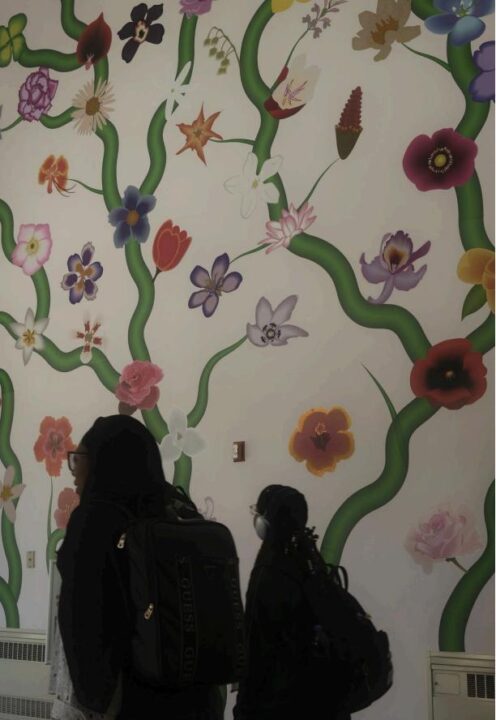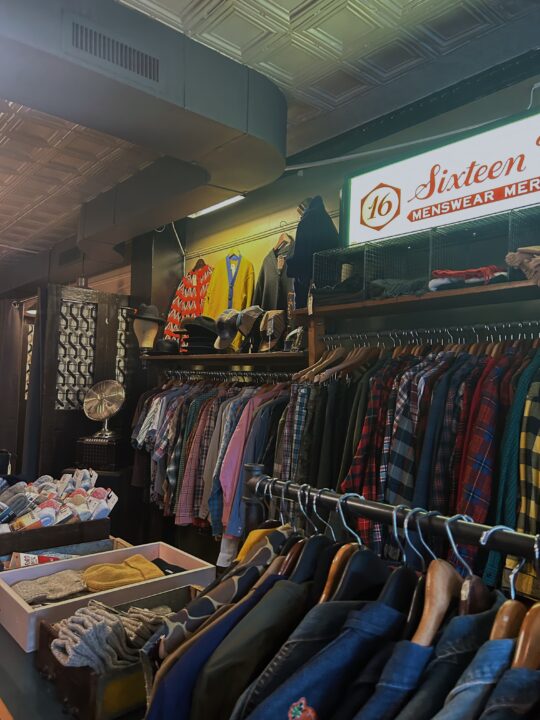In the mid-1970s, groups of women settled in Oregon, California and New Mexico in order to occupy a land-based community, by women, for women, that would respect their rights as lesbians, feminists and environmentalists. This community soon turned into the Oregon Women’s Land (OWL) Trust, a non-profit that would help make land available for all women, no matter her economic status.
Part of a wider exploration of communal spaces such as the OWL Trust, UMBC Assistant Visual Arts Professor Sarah G. Sharp has created two pieces entitled “Whole Earth Systems” and “Finding Our Place in Space” on display within a larger faculty exhibit at the Center for Art, Design, and Visual Culture. Sharp is currently working on a research project entitled “Youth Communes and The Pacific States,” where she explores communal spaces in the United States in the 60s and 70s.
“Whole Earth Systems” pays tribute to the “Whole Earth Catalog,” published from 1968 to 1972, which provided information about sustainable farming and alternative economies and served as a space for political speech, while “Finding Our Place in Space,” an 11 minute digital exhibition, explores the parallels between the OWL Trust and the 1975 Mars rover landing.
Within “Whole Earth Systems,” Sharp took inspiration from symbols found in the 1969 “Catalog” and embroidered them in metallic gold thread onto denim squares. Nine images are grouped together in a sort of patchwork quilt, while the others are left as samplers, individual embroidered specimens left to one day start their own quilt. Positioned next to the actual denim squares are pictures of the squares situated within an arid environment, as if to present a fully realized version of nature next to a dying one.
“Finding Our Place in Space” orients the OWL Trust beside the Mars rover landing of 1975. Both events find people seeking new frontiers for further self-sufficiency, and the OWL Trust’s push for female agency is contrasted by the incredibly masculinized space race of the 70s. The title of the piece, “Finding Our Place in Space,” even takes on a new meaning when explored in a gendered light. If “our” is taken to represent women as a whole, to find our place in space could refer to finding a space for women to feel empowered and accepted in their own right, as in the Oregon Women’s Land Trust.
Sharp’s investigation of communal spaces allows for the intersection of many different conversations surrounding gender, agency and technology in the 60s and 70s. Through her work, she encourages these discussions and asks us to reorient what we know of history in a different light and learn more about those who have created spaces before us.
“Spectrum: 2017 Visual Arts Faculty Exhibition” will be on display at the CADVC until Dec. 16. The CDAVC is located on the first floor of the Fine Arts Building, Room 105. The gallery is open Monday to Saturday from 10:00 a.m. to 5:00 p.m. and Sunday from 12:00 to 5:00 p.m. On Thursdays the gallery is open until 7:00 p.m.

